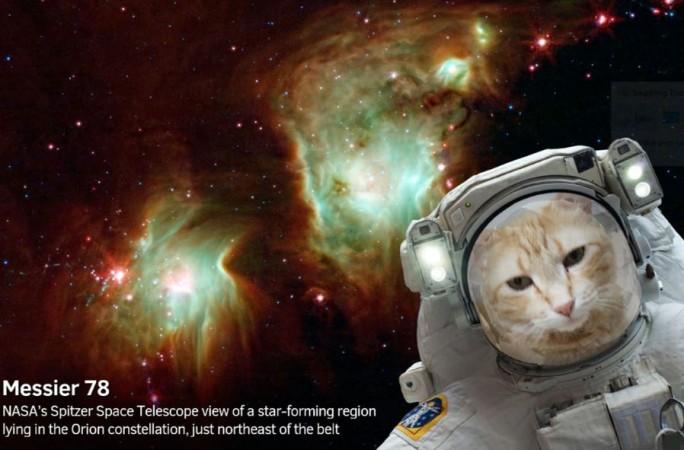
Clicking selfies and posting them on social media is the new trend; however, why just stop with clicking selfies at restaurants and parks; when you can take selfies in space? No, I'm not kidding. You can now click selfies in outer space without having to leave your couch; thanks to the new NASA app.
Recently the American space agency has launched two apps for the common people.
The first one is the NASA Selfies app. It allows the users to generate their pictures wearing a virtual spacesuit "in front of gorgeous cosmic locations, like the Orion Nebula or the center of the Milky Way galaxy." Using this app's simple user interface, people can click a picture of themselves, choose a background and share it with their friends and families on social media.
It doesn't only provide the gorgeous cosmic pictures as backdrops. "The app also provides information about the science behind these stunning images," informed NASA. Right now, one can choose from 30 stunning images, which were all captured by Spitzer. As per the agency, the app will soon integrate more images "from the agency's other science and human spaceflight missions."
The app is currently available on both iOS and Android.
The second app is called the Exoplanet Excursions VR app. If you love virtual reality and are an avid user of this technology then this app is an absolute treat for you, as it takes the users on a tour of the TRAPPIST-1 planetary system.
TRAPPIST-1 is the one and only exoplanet system, known to humans, that hosts seven planets, which are more or less similar in size to our home planet. Spitzer has played a key part in spotting the system and providing significant information about the planets to the scientists. The TRAPPIST-1 system is located so far away that even the strong telescopes can't directly observe these planets. However, this app allows the users to do just that.
"This VR experience features artists' impressions of what the planets might look like. These impressions are based on data from Spitzer and other telescopes that have studied the TRAPPIST-1 system. Users of the app are navigated around five of the seven planets, surrounded by the blackness of space and the faint lights of distant stars."
Oculus and Vive users will be able to access this VR app via the Spitzer mission website. Also, the agency informed that the app will soon be available in the Oculus store too.

















